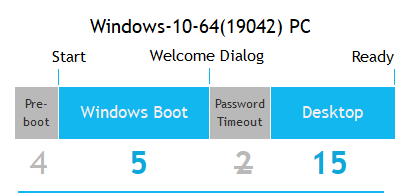I have been using Xfce for a long time until recently. My machine is quite old: i5 2500, 8 GB 1333 RAM, Radeon RX 580. For a few weeks now I’ve been trying KDE again. To be honest, I don’t find any real difference in the response times. Installed on an 850 EVO SSD. I think Xfce also seems a bit snappier because there are hardly any graphical effects. If I switch back to Xfce, it won’t be because of performance at all, but because of Plasma’s error-proneness and the many cooks that potentially spoil the broth here. The thing with Qt is another problem …
Thing is, ram usage is not that important, not when the difference is 100-200MB between DEs. I think CPU usage is more important, and that’s where the differences might lie. Maybe XFCE does something more efficient than other DEs. I can’t tell, I don’t know. I just wanted to point out that there may be other metrics than RAM that are more relevant to establish “lightness” of a DE. RAM used is a bit random metric. Especially since we are talking about the range 300-500MB for most DEs.
It depends on your needs/workflow. Your laptop is more than capable of handling either one.
In terms of faster? XFCE has always been my go to for speed/size. Since XFCE is modular you can opt out/replace different components. Cinnamon pulls in a ton of dependencies that are required so by comparison XFCE will be faster to download/install/update even if it is barely noticeable on new/better hardware.
Welcome aboard!
Is this fast enough?
$ systemd-analyze blame
667ms systemd-logind.service
605ms lightdm.service
504ms smbd.service
407ms dev-nvme0n1p12.device
310ms udisks2.service
225ms systemd-hwdb-update.service
213ms ModemManager.service
209ms systemd-journal-flush.service
181ms deepin-accounts-daemon.service
171ms systemd-udev-trigger.service
135ms accounts-daemon.service
131ms laptop-mode.service
115ms NetworkManager.service
113ms smartmontools.service
112ms upower.service
108ms deepin-login-sound.service
103ms wpa_supplicant.service
102ms networking.service
86ms lvm2-monitor.service
72ms user@1000.service
49ms systemd-rfkill.service
45ms ssh.service
43ms systemd-timesyncd.service
..................
systemd-analyze
Startup finished in 2.704s (firmware) + 5.391s (loader) + 4.230s (kernel) + 1.800s (userspace) = 14.127s
graphical.target reached after 1.794s in userspace
It is Deepin 20.2
The systemd analysis timings have nothing to do with the desktop you use. The timing stops when lightdm has been started.
Looks pretty normal. Here’s a Windows 10 machine:

The question was, whether it was fast enough. 
Atm, it is the fastest booting system I have, from grub to login screen, and from login to work screen. The 2nd fastest is Endeavour Plasma. It is just subjective feeling, nothing more.
It is certainly fast! Only assembling my 3 ZFS pools with 33 encrypted datasets takes 11 s during boot. ![]()
I wonder how KDE managed to bring plasma down to the size of XFCE 
Is Xfce faster then Cinnamon, not sure but thier both good. Whats better is “Bender DE” Xfce/i3, i even left Plasma behind for it. 
For me, it’s more how I work with it. Not so much the speed of the OS themselves. I think most OS today are fast enough.
Have you tried Gnome? I find it quite slow, but maybe it’s just because I can’t get used to its interface, everything seems slower.
Plasma(and gnome) did get lighter a couple of years ago through heavy optimization efforts. However, XFCE also got heavier when the move to gtk3 occurred.
XFCE is way faster than any Desktop available. Sure thing…
Honestly on every desktop I think it’s just the work flow that is different on my hardware. I have Xfce, Cinnamon and kDE installed on the same hardware and it doesn’t really matter what desktop i install on it. They all are relatively the same performance in terms of responsiveness. I have newer, more powerful hardware that has high specs with loads of ram. Some desktops use more ram than others but it is insignificant to how they all work on this hardware. Older lower spec hardware will definitely be taxed when it gets loaded up and that’s why i think some people see a difference. Just my 2 cents. Yes i can have issues even on this hardware if there is a problem with the software such as virtualbox. If it isn’t keeping up with updates that happen on the rolling architecture of Arch it can behave badly. But, for the most part it doesn’t matter if i use Xfce, Gnome Kde, Cinnamon, Deepin whatever. As long as there aren’t issues with something they all are quite equal.
